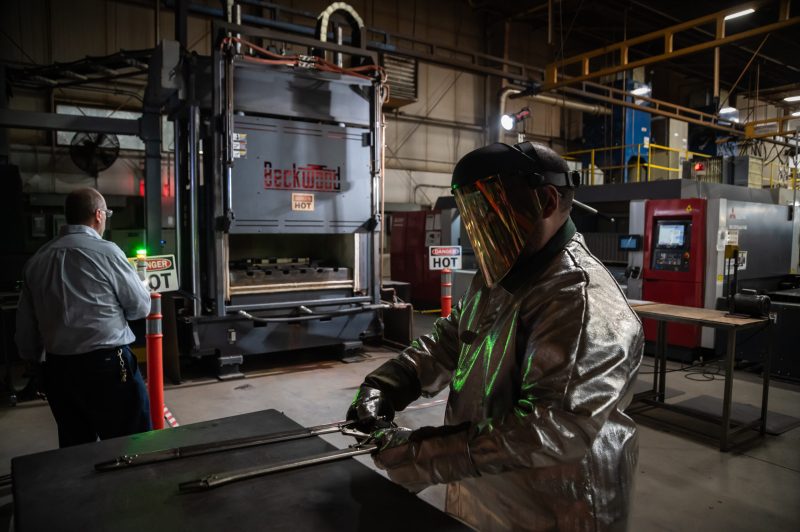By Bill Carson | May 1, 2024
Titanium, known for its exceptional strength, corrosion resistance, and high-temperature performance, plays a pivotal role in the aerospace industry. When combined with the hot forming process, titanium’s strength as a material is coupled with the capability to be formed into more complex shapes than with other forming methods, offering unparalleled benefits for aerospace applications. Here, we’ll discuss those benefits further and outline how titanium hot forming for aerospace products is the preferred manufacturing method for discerning part and assembly providers.

Titanium is a gold standard in aerospace materials, thanks to its outstanding strength-to-weight ratio, unparalleled corrosion resistance, and superior performance under high temperatures. When juxtaposed with traditional aerospace materials like aluminum, titanium’s advantages become even more pronounced. For instance, with a low thermal expansion rate, titanium doesn’t change shape significantly with temperature changes — ensuring stability and precision in sensitive applications.
Titanium was discovered in the late 18th century but remained a laboratory curiosity until the early 20th century due to difficulties in extraction and processing. It was initially used in military applications, such as in armor and naval ships during the Cold War era, due to its strength and resistance to corrosion. The introduction of jet engines in the mid-20th century marked a turning point for titanium in aerospace. The metal’s ability to withstand high temperatures without losing strength made it ideal for jet engine components, leading to its increased use in military and then commercial aircraft. Today, titanium is not just used for structural components and engines but also in landing gear, hydraulic systems, and increasingly, in the fast-growing sector of commercial space exploration.
Hot forming, a process where metal is shaped at elevated temperatures, reduces the force required to form complex shapes because of titanium’s enhanced ductility at elevated temperatures. This method stands in contrast to cold forming techniques, which, while beneficial for certain applications, do not provide the same level of formability for materials like titanium. The hot forming process enables part shapes unattainable through cold forming with production benefits such as:
The malleability of titanium at high temperatures allows engineers to push the boundaries of design, creating complex shapes and intricate designs previously unattainable. This flexibility reduces the reliance on mechanical joints — which add weight and potential points of failure — resulting in structures that are both lighter and stronger.
The process of hot forming a part from titanium sheet metal is typically a less expensive process than constructing the part through CNC machining from a block of the material. The method also allows for the exploration of new potential parts to be made of titanium, which previously were too cost-prohibitive to produce through machining but might be more viable with the hot forming technique.
Titanium hot forming is synonymous with excellence in dimensional accuracy. The consistency in production it offers ensures that aerospace components are reliable and meet the stringent standards of the industry.
The combination of titanium and hot forming represents a significant leap forward in aerospace manufacturing, offering a blend of performance, efficiency, and design flexibility that is hard to match. As the aerospace industry continues to evolve, the demand for lighter, stronger, and more reliable components will undoubtedly keep titanium hot forming at the forefront of manufacturing innovation.
Now a part of Re:Build Manufacturing, Re:Build Cutting Dynamics is dedicated to pushing the boundaries of what’s possible with titanium, harnessing the power of hot forming to create components that are technologically advanced. Our hot forming press, which operates at up to 1,600℉, uses several advancements to optimize the process:
For nearly 40 years, Re:Build Cutting Dynamics has focused on providing unmatched value to customers in need of anything from our extensive list of aerospace manufacturing capabilities. Our established system of measurable objectives, industry-leading technology, and continual improvement deliver results that have allowed us to work with some of the biggest brands in aerospace.
Unlock advantages in titanium hot forming for aerospace applications and much more with our team.
Connect with us today to get started.
Re:Build CDI
980 Jaycox Road
Avon, OH 44011
All rights reserved Re:Build Manufacturing LLC – Cutting Dynamics ©2024